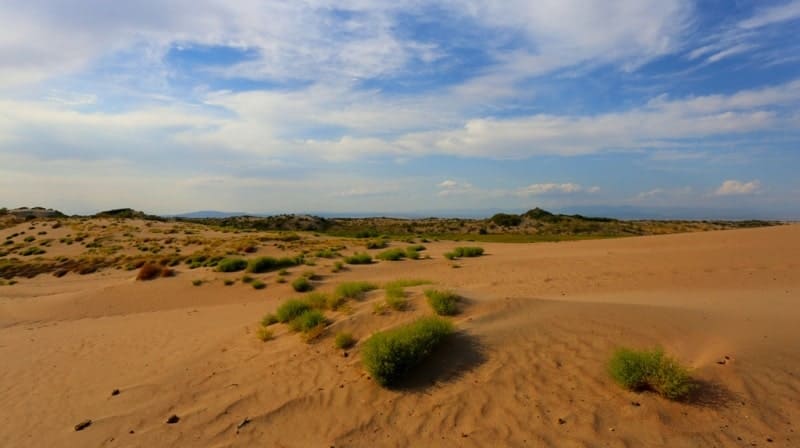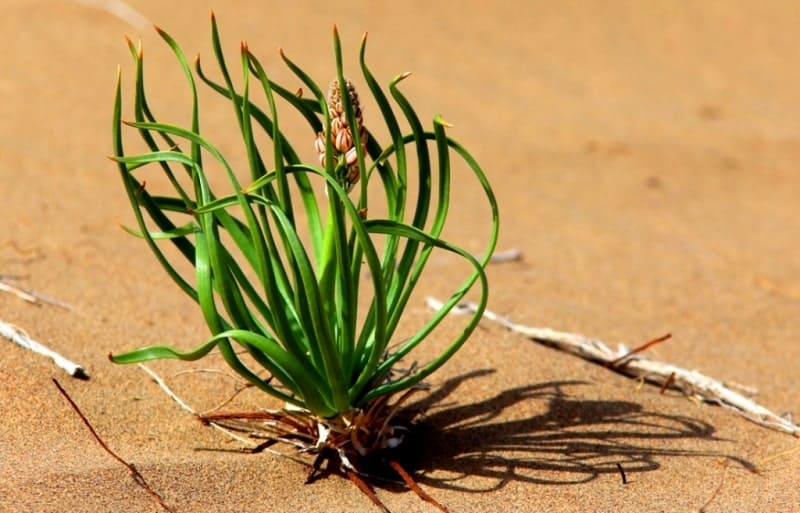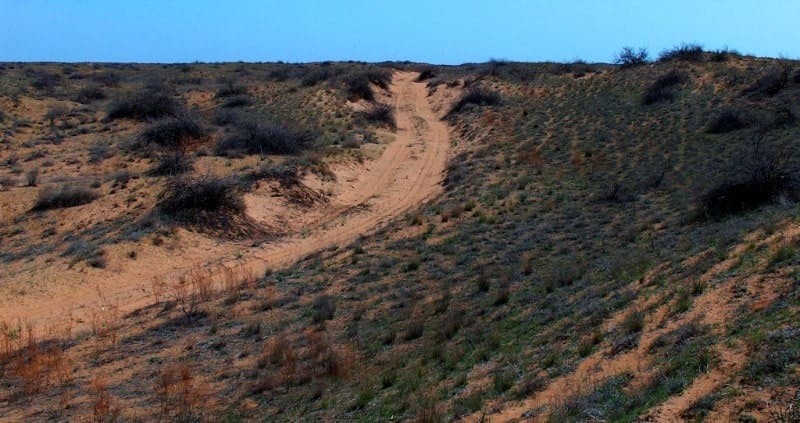You are here
Desert Taukum.

Across travel in Almaty area.
“Nature is wise. You can learn everywhere and from everything”
Leonardo da Vinci.
Mountain tourist Nothern Tien-Shan.
The Taukum Desert is located at an altitude of 530 meters above sea level in the southeastern part and up to 350 meters above sea level in the northwest, located to the west, along the left bank of the Ili River for 310 kilometers and from the eastern side of the M36 highway for 238 kilometers from the village of Kurty to the village of Burybaital located in the southwestern part of Lake Balkhash in the Zhambyl, Ili and Balkhash regions in the north-west of the Almaty region.
The Taukum Desert consists of small local sands, which have their own names. The southeastern part of the Taukum sands is supported by the small sands of Adbylkum in the south and Sarytaukum in the north.
Here, on the western side, the sands border on the famous Bozoi plateau. In the central and eastern part of the sands, there are the Moiynkum sands, which stretch from the southeast to the northwest for a little more than 100 kilometers along the Ili River.
In the central, western part, the desert borders on the sands of Buyratkum, located north of the village of Kanshengel, stretching from southeast to northwest for 40 kilometers. To the northwest of the Bayratkum sands are the Korgankum sands stretching from the northwest to the southeast for 57 kilometers.
The area of the desert is about 10,000 square kilometers. The Taukum Desert is 240 kilometers long and 60 to 80 kilometers wide. The sands of Taukum are represented by ridge-hummocky, hummocky and ridge sandy massifs, located mainly in the delta of the Ili River.
It consists of unevenly high ridges (from 2 - 4 meters to 30 meters) and mounds (up to 2 - 4 meters high) with gentle slopes, oriented mainly from south to north. The height of the sand dunes reaches 10 - 15 meters. The ridge-hummocky plain in the delta part of the Ili River is of Early Middle Quaternary modern age.
Desert sandy soils and sands of the Taukum massif are represented by a valuable series of transitional formations from loose dunes to more or less connected sandy soils fixed by vegetation. The exposure of sands to the action of wind creates unfavorable conditions for the formation.
The flora of the Taukum desert is represented by dzhuzgun, wormwood, saxaul, wheatgrass. In the south, the border of Taukum runs along the course of the Ili River, on its banks there is a tree-shrub vegetation - tugai, where many animals live.
In addition to shrubs, the Taukum sandy massif has several species of herbaceous plants, mainly spring ephemera. The possibility of the existence of these plants here is determined by the humidity of the upper sandy layers in the spring.
Along with ephemera, there is also a large number of perennial grasses, of which species of the genus Aristida are especially well adapted to the movement of sand. This grass continues to grow through the sand even when the plant is covered to the tips of the leaves; at the same time, it forms new sterns in the more highly located sand layers.
In sandy deserts, which include the Taukum Desert, the arrangement of vegetation cover components is constantly changing. On the crests of the moving dunes there are grasses, on the upper parts of the slopes there are shrubs, on the lower slopes there are grasses, and on the compacted sands between the dunes, ephemera develop, which extract water from a depth of up to 1.5 meters.
They are adapted to significantly limit evaporation. This is typical for a typical plant of these places - saxaul, reaching a height of 4 meters. The leaf surface is also strongly reduced in bush-like tall (up to 5 meters) plants, some types of saltwort and astragalus.
Summer in the desert is long and hot. The average temperature in July and August is 24 - 26 ° C, sometimes over the surface of the sand the temperature reaches 40 ° C. Precipitation occurs in April, late September, October; precipitation is extremely rare in the summer months.
Geographic coordinates of Taukum Desert: N44°44'10.97" E75°16'06.88"







Authority:
"Kazakhstan. National encyclopedia" (1998 - 2007).
"Anyrakay Triangle Historical-Geographical Area and Chronicle of the Great Battle". I.V. Erofeeva, B.Zh. Aubekerov, A.E. Rogozhinsky, B.N. Kaldybekov, B.T. Zhanaev, L.L. Kuznetsova, R.D. Sala, S.A. Nigmatova, J.M.P. Deom. Almaty, 2008. "Dyke Press".
Photos by
Alexander Petrov.







